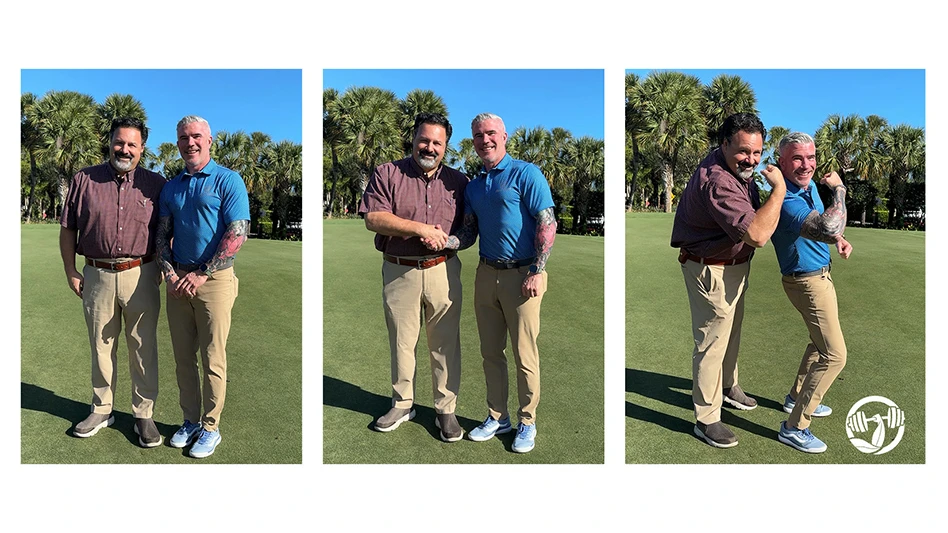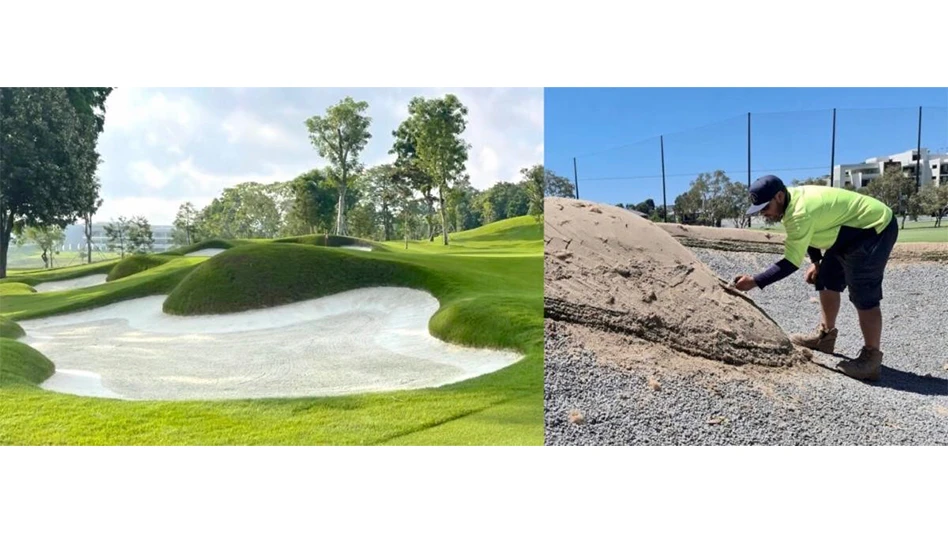
Shortland Golf Club is not the first outdoor track to install synthetic tees and greens. There have been others before. There will be others to come. But if the new Oregon project works out how its owner, architects and superintendent think it could, the 19-hole short course might develop a new niche and provide another blueprint for success in an expanding golf landscape.
Located south of downtown Portland, Oregon, plenty separates Shortland — which is scheduled to open throughout this spring and summer, first the front nine holes, then the back 10, then a 19-hole chipping and putting course, and finally an 11,000-square-foot natural putting green — from other courses with synthetic tees and greens.
Let’s start with its commitment to creative design. And with the man writing the checks.
Like so many golf course owners, Mike Fritz has loved the game since childhood. His dad, Dennis, passed down the basics to him and his younger brother, Ben, when they were in elementary school. They played in high school, won a couple team state championships, then Fritz drifted away while studying business at Oregon State University. He worked for Nike for a decade — the last three years for Nike Golf, where he focused on footwear development, and where he started on the same August 1996 day Tiger Woods signed with the company. He left in 1999 to help his parents run their engineering automation business, DWFritz. After his mother, Susan, died in 2007, he took over operations, and helped grow the business from 19 employees to 550. The family sold the company in 2021.
Fritz is a member at Portland Golf Club, but his golf inspirations range well beyond its fairways. Now with a little more cash on hand, he eyed the old Sandelie Golf Course in West Linn, with ideas about a renovation. Oregon favorites Bandon Dunes and Gearhart Golf Links provided some ideas. So did a more irreverent Québec private pitch-and-putt called Sunset Golf Links and The Gorge 9 at Skamania Lodge in Washington, which features synthetic tees and greens.
“They have huge greens and no bunkers,” Fritz says. “They were a lot faster and more consistent than I thought they would be. ... I was watching people hitting 195-yard 5 irons in and they would just bounce.”
Fritz reached out to Weston Weber, a synthetic golf turf pioneer who recently sold Celebrity Greens. Weber specializes more in synthetic backyard projects and provided perspective and his foot-deep proprietary blend of rock, sand and padding. “He’s been crucial to understanding the technology,” Fritz says.
And tech is just as important for synthetic turf as it is for the real stuff. To hear Jackson Kahn design associate Connor Dougherty tell it, “Artificial turf progress, as far as R&D, is just getting there.” Dougherty is the best kind of golf nut. He rattles off four different types of synthetic material used on most Shortland holes, even providing a different reaction to balls landing from 80 or so yards away, then discusses the science below the surface.
“The greens get an 8-millimeter impact pad underneath and that really is just extra help with the receptiveness of the greens,” he says. “But it’s mostly happening in the sand. Instead of being angular, like in a greens mix or on a golf course, it’s very rounded, so it actually plays softer.”
And as far as maintenance: “There is maintenance,” Dougherty says. “You have to stay on top of brushing the sand out and making sure it’s consistent. If you get rain, it tends to wash to the low and that gets faster because the infill gets tighter. And you still have to spray for mold and fungus. But there are effectively no ball marks and the greens should run at 10 ½ consistently.”

“A lot of people keep saying, ‘Oh, you’re not going to have to do anything to the greens,’” says Dustin Pokorny, who worked 14 years at Portland Golf Club and is now in his second season as the Shortland superintendent. “Well,” he laughs, “I think there’s going to be a difference in what we’re doing to the greens. Most of the guys doing this kind of install are more backyards, private homes. But a full golf course and what it’s going to take to keep greens in shape, I mean, they make it sound like it’s easy. I’m taking that with a grain of salt.”
Pokorny knows how to maintain turf. So does his assistant, 35-year industry veteran Tony Henderson. And so will the likely two other full-timers who will join their team this year. Learning how to maintain those greens has been a bit more of a process.
“Very educational,” Pokorny says. “A little overwhelming sometimes. But I’m excited, and I’m up for the challenge. It’s why I took the job.”
Synthetic turf has advanced considerably since Dougherty first worked on it: Back in the early 2000s, he watched his dad, Brian, add a 2,000-square-foot synthetic green in their East Bay backyard. “But nothing like this,” Dougherty says with a laugh. “You couldn’t even hit chip shots. My dad wanted to work on his putting.” So much so, in fact, that he later installed a similar green in two other backyards after family moves, with his son helping on each of them. “Now,” Dougherty says, “I’m trying to talk him into buying a simulator.”
Look around Shortland — rhymes with Portland, suggested by Fritz’s middle son, Carson — and there is a certain simulator ethos. Everything is real except the tees and greens, but you could easily imagine it all on a screen. Walks between holes are shorter and rounds are designed to last two hours tops. Every hole measures 99 yards or less.
The timing for the grand opening is ideal: Simulators are everywhere, and the synthetic turf that accompanies them is top of mind. Even Woods and his TGL cohorts are playing on synthetic turf weeknights on ESPN. And the greens at Shortland are almost as wild as the rotating surface inside the SoFi Center in Palm Beach Gardens, Florida.
“We knew what we wanted to do out here,” Dougherty says. “I don’t think a lot of people involved realized how radical it was going to be until we actually started moving dirt. And that’s standard for any project. Once they saw the movement in the greens, it was, ‘Oh, wow.’ The potential in the site was always there. Everybody has that picture in their head. Actually seeing it was a different experience.”
And, big picture, if the round sand doesn’t clump, if the greens look as good after five years as they do after one, if water continues to limit green grass in certain parts of the country … could there soon be more courses like Shortland?
“I’d be lying if I said (lead detail shaper) Corey (Billings) and I haven’t talked about it a little bit,” Dougherty says. “It’s all about if it functions. Being a big part of the future of golf, that’s really only the case if this actually works.
“The Southwest is definitely the big spot, just because the water use is such a big issue. But theoretically, it could work anywhere.”

Explore the March 2025 Issue
Check out more from this issue and find your next story to read.
Latest from Golf Course Industry
- Toro continues support of National Mayor’s Challenge for Water Conservation
- A different kind of long distance
- Golf Construction Conversations: Stephen Hope
- EnP welcomes new sales manager
- DLF opening centers in Oregon, Ontario
- Buffalo Turbine unveils battery-powered debris blower
- Beyond the Page 66: Keep looking up
- SePRO hires new technical specialist






